|
In 2006-07, Michael took a sabbatical to study
Chinese. I spent the fall term at Yunnan Normal University (YNNU).
Before I came to China I didn't know that a "Normal University" is a
teachers' college (this is apparently a British term).

This university has a proud history. Soon after Japan invaded China,
China's best universities decided to unite and relocate here. After the
war, most of the professors and staff returned to their former campuses,
but a small teachers' college remained. |

During the civil
war (Dec 1, 1945) a teacher and three students died as the government
tried to suppress a movement for change; those who died are memorialized
here as heroes of the revolution. There is a very nice museum back in this
part of campus. The street in front of campus is also named "December 1"
in their honor |
|
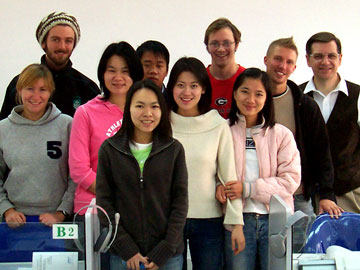
This is a photo of some of Michael's classmates (Fall 2006). (The
teacher is the one wearing a white sweater.) Michael had classmates from
Australia, Italy, Korea, Scotland, Sweden, Thailand, the USA and Vietnam
(though everyone was rarely present at the same time!). |
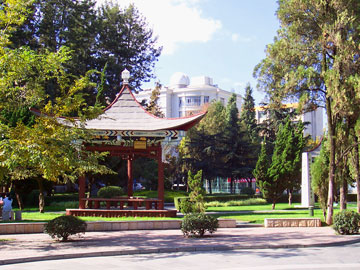
My classroom building is behind this little park. On most
days you can find students studying or talking together under the trees or
in the pavilion. The pavilions have three pillars to represent the three
main universities which moved here in the late 1930s: Peking University,
Nan-Kai University (Tianjin), and Qinghua University. |
|
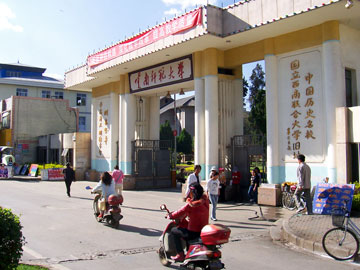
The front gate
is on a busy street, but a large fence down the middle of the road keeps
traffic moving without pedestrian interference. Many years ago, this bike
lane would have been crowded with bicycles, but motor scooters and private
cars have replaced many of the bikes. |

The statue is of
Wen Yi Duo, an outspoken advocate for change who was executed in the civil
war, and thus honored as a martyr of the revolution (see above). The sign above him reminds everyone to speak Mandarin instead
of their local Chinese dialect. I wish people did this, because it would
make learning the national language much easier! |
|
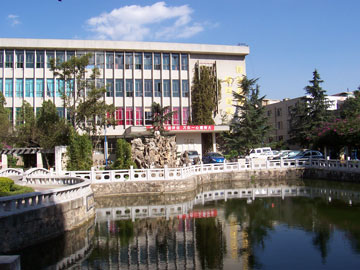
This is the main
library. The lake was created by Japanese bombs during World War 2, as
they sought to disrupt the university's important role. The Japanese
bombed Kunming often until the Flying Tigers
arrived to challenge them. |
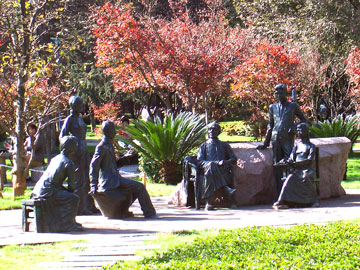
Vivian and I
love the life-size statues like these that are all over the country. This
set depicts students and teachers in a mix of classic and modern clothing,
as might have been seen on campus in the middle of the 20th century. |
|

Basketball is
very popular in China, especially among college students. The lunch break
lasts from noon to 2:30, and many students play during this time. (We
could
hear the enthusiastic cheers from our classroom, because unlike Chinese
students, the foreign students return to class at 1:00.) |
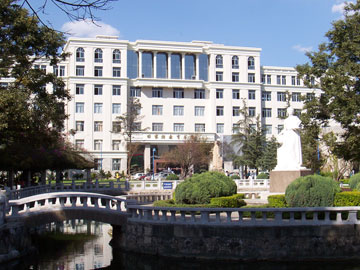
This is an administration (and classroom?) building. |
|
More Photos:
Click here for photos of former
students in Xi'an, Kunming, or
Shanghai
Student
Essays: Click here
to see student essays from former students about NPU, Chinese holidays, and
more.
|









